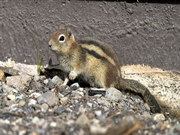Mouse Control

Mouse control has three main components: exclusion, poison or trapping and clean-up.
It is more desirable to keep mice out that have to get them out later, but exclusion is much easier said than done. Mice can squeeze through holes as little as ¼-inch wide. If needed, they will chew holes or cracks wider to make it easier to get to what they want. Successful exclusion requires an experienced eye, knowledge of the habits and movements of mice, and a lot of practice.
Poison is commonly used to control mice, but should be used with considerable caution. We do not recommend poisons for interior use due to the risk of harm to other living things in the house and because poisoned mice die inside the home, creating a whole new set of problems from smell and rot. Exterior poisons are a very effective method for mouse control. But, again, they must be properly used so that inadvertent poisoning does not occur.
There are many different styles of mouse traps, including snap traps, kill boxes and glue boards. Trapping is the most effective way to control mice once they are inside a structure.
Mice cause a surprising amount of damage, not so much in the food they consume as in the mess they make. Droppings and urine will be everywhere, contaminating everything they come in contact with. Furniture, carpet, drapes and electrical systems can be gnawed. If these signs of mouse are left in place, more mice will move in, sensing that this is a good place for them. Any mouse control plan must include clean-up in order to succeed.

 1-888-488-7720
1-888-488-7720































